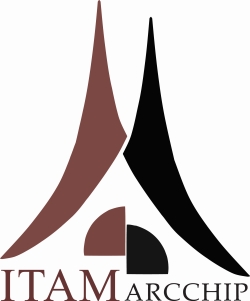Working package – WP1
Modelling the behaviour of historic and modern materials and structures under the joint action of a range of climatic factors
The scientific objective of WP1 is to create models of the interactions between solid bodies and the surrounding environment, utilizing the findings obtained by numerical and experimental modelling of the influence of wind on structures, including monuments, and taking into account the influence of other weather factors, e.g. cyclic changes in temperature and exposure to rain. A further objective is to obtain new findings and knowledge by means of long-term sustainable monitoring and modelling of the behaviour of real structures exposed to long-term weather effects and susceptible to vibrations and to damage caused by high-cycle fatigue. The scientific projects lead to outputs in the form of proposals for dealing with the aeroelastic and aerodynamic behaviour of structures, models and proposals for measures to provide a more comfortable environment in housing estates and in the neighbourhood of transport structures. Knowledge acquired from simulations of the effect on buildings, historic objects and monuments of the most important climatic parameters, e.g. wind, temperature, solar radiation, rain and humidity, help to deal with these issues.
Working package – WP2
Studies of the lifetime and degradation processes in construction materials, and advanced experimental methods to develop advanced surface treatments for construction materials
The scientific objective of this WP is to obtain new knowledge about the ageing and corrosion of materials, especially metals, stone and inorganic composites, and to find the best ways to protect their surfaces. Models of the degradation of materials will be created and then calibrated and verified. Using the infrastructure of the Centre, the long-term behaviour of the materials will be monitored and studied in real climatic conditions. A further objective is to obtain data on the lifetime of historic materials, to propose and implement methods for monitoring the behaviour of materials and structures, including monitoring of defects. One task is to establish and maintain a database of construction defects and faults. In order to fulfil these scientific objectives, CET will set up a unique experimental and analytical infrastructure, which will also be usable for a wide range of investigations. This research package therefore involves developing new experimental methods and elaborating proposals for new or improved methods, instruments and equipment, especially for testing wood and inorganic composites. WP2 will benefit from the opportunities provided by the Radiography and Microtomography module, the special climatic and analytical laboratories, the equipment for material analyses and the CET’s module in support of the database for monitoring the built infrastructure.
Working package – WP3
Materials, technologies and methods for achieving long-term preservation of monuments
The objective of the research is to design, develop and test new materials and technologies that are compatible with historic materials and technologies. The focus is on consolidating and restoring degraded historic materials and extending their lifetime and the lifetime of monuments. A further objective is to design a system for analysing the impacts of natural disasters and other threats on the building stock, with particular reference to the preservation of cultural heritage, and to propose procedures and technologies for mitigating the damage caused by natural disasters. Natural threats (especially earthquakes, floods and landslides) include the impact of weather. This package will also deal with the development of methods for optimizing preservation interventions with the use of mobile diagnostic laboratories in emergency situations. Important objectives are to create procedures and tools for evaluating and assessing the impacts of development programs (tourism, new architecture, etc.) on the sustainability of the monumental and socioeconomic features of historic settlements, and to create tools for integrating monuments into an urbanized environment.




